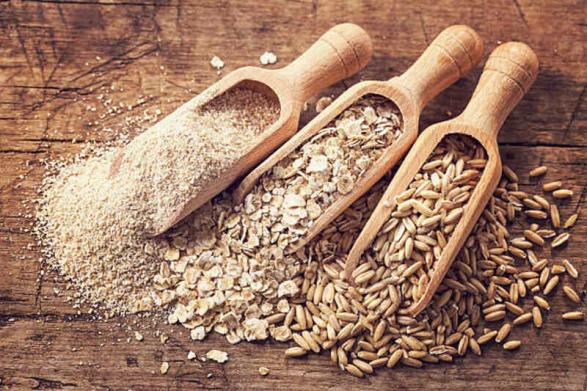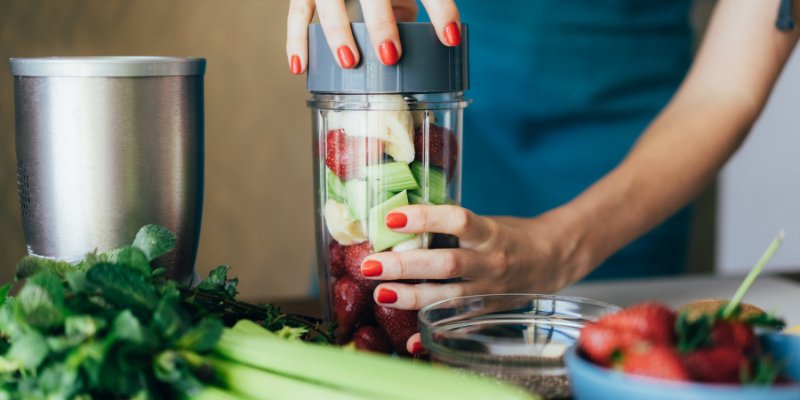Navigating the Ideal Nutrition: Best Diet Choices for Gout Sufferers
Nov 07, 2023 By Madison Evans
Gout is a painful and debilitating condition that affects millions of people worldwide, making it one of the most common forms of arthritis. The symptoms of gout can be both physically and emotionally taxing, which makes finding an effective diet to manage your symptoms essential. By utilizing a well-balanced nutrition plan with specific food choices like certain fruits and vegetables, whole grain breads and cereals, as well as protein foods such as lean meats, fish and tofu, you can help control your gout attack severity while still providing adequate nourishment to your body. In this blog post we will provide insight into why some food choices are better than others for managing gout symptoms; helping you learn how to navigate through the ideal nutrition plan for living with gout without compromising on flavor or satisfaction.
Definition of Gout
Gout is a type of arthritis that occurs when there is an accumulation of uric acid in the body. Uric acid is a normal waste product formed during digestion and it's typically dissolved in the blood, filtered by the kidneys, and eliminated through urine. However, for individuals with gout, their bodies either produce too much uric acid or have difficulty eliminating it, resulting in high levels of uric acid in the blood. This excess uric acid can then form into sharp crystals that accumulate in the joints, causing pain and inflammation.
Diet and Gout
While gout is not directly caused by diet, certain foods can trigger or worsen gout symptoms. The key to managing gout through diet is to limit foods that are high in purines, a compound that is broken down into uric acid. Purine-rich foods include red meat, organ meats, shellfish, and certain types of fish like sardines and anchovies. Alcohol consumption, especially beer and spirits, can also increase uric acid levels in the body.
Best Diet Choices for Gout Sufferers
Now that we understand the basics of gout and its relationship with diet, let's take a closer look at some of the best food choices for managing gout symptoms.
1. Low-Purine Fruits and Vegetables
Fruits and vegetables are an important part of any healthy diet, but certain choices can be especially beneficial for individuals with gout. Low-purine fruits and vegetables such as apples, berries, citrus fruits, leafy greens, and cruciferous vegetables like broccoli and cauliflower are great options for gout sufferers. These foods not only provide essential vitamins and minerals but also help to flush out excess uric acid from the body.
2. Whole Grains

Whole grains are an excellent source of complex carbohydrates, which are essential for energy and brain function. They also contain high levels of fiber and other nutrients that can help lower uric acid levels in the body. Some great options to include in your diet are whole grain bread, brown rice, oatmeal, and quinoa.
3. Lean Meats
While red meat is a top offender for gout sufferers, lean meats like chicken and turkey can be included in moderation. These protein sources are lower in purines and can provide essential amino acids for maintaining muscle mass.
4. Fatty Fish
Unlike shellfish or other high-purine fish, fatty fish like salmon, mackerel, and tuna are rich in omega-3 fatty acids which have anti-inflammatory properties. These healthy fats can help reduce gout-related inflammation and pain.
Foods to Avoid for Gout Sufferers
In addition to making smart food choices, it's also important for gout sufferers to limit or avoid certain foods that can trigger gout attacks. These include:
Red Meats
and Organ Meats
As mentioned earlier, red meat and organ meats like liver and kidneys are high in purines and should be limited.
Shellfish
Shellfish such as shrimp, lobster, and scallops are also high in purines and can increase uric acid levels in the body.
Alcohol
Alcohol consumption should be kept to a minimum for individuals with gout, as it can increase uric acid production and decrease the body's ability to eliminate it.
Sugary Drinks

Sugary drinks like soda and fruit juices have been linked to increased risk of gout attacks. It is best to opt for water or unsweetened beverages instead.
Meal Plan for Gout Sufferers
To put these food choices into action, here is a sample meal plan for individuals with gout:
- Breakfast: Oatmeal with berries and almond milk
- Snack: Apple slices with almond butter
- Lunch: Grilled chicken salad with mixed greens, cucumber, and avocado
- Snack: Carrot sticks and hummus
- Dinner: Baked salmon with quinoa and roasted vegetables
- Dessert: Mixed berries with Greek yogurt
Tips for Managing Gout Symptoms
In addition to following a healthy diet, there are other lifestyle factors that can help manage gout symptoms. These include:
Staying Hydrated
Drinking enough water is important for flushing out excess uric acid from the body. Aim for at least 8 glasses of water per day.
Maintaining a Healthy Weight
Being overweight or obese can increase the risk and severity of gout attacks. Maintaining a healthy weight can help reduce symptoms and prevent future attacks.
Exercising Regularly
Regular physical activity not only helps with weight management but also has anti-inflammatory effects that can benefit individuals with gout.
Seeking Medical Treatment
If you are experiencing frequent or intense gout attacks, it's important to seek medical treatment. Your doctor can prescribe medication to help manage symptoms and prevent future attacks.
Conclusion
Living with gout doesn't mean you have to sacrifice flavor or satisfaction in your meals. By making smart food choices and incorporating healthy lifestyle habits, you can manage your symptoms and improve your overall health. Remember to always consult with your healthcare provider before making any significant changes to your diet or exercise routine. So, take control of your gout management by following these tips and enjoy a healthier, more comfortable life. Keep in mind that everyone's body is different, so it may take some trial and error to find the best diet plan for your specific needs. Stay mindful of what you eat and listen to your body's responses to find what works best for you.
On this page
Definition of Gout Diet and Gout Best Diet Choices for Gout Sufferers 1. Low-Purine Fruits and Vegetables 2. Whole Grains 3. Lean Meats 4. Fatty Fish Foods to Avoid for Gout Sufferers Red Meats Shellfish Alcohol Sugary Drinks Meal Plan for Gout Sufferers Tips for Managing Gout Symptoms Staying Hydrated Maintaining a Healthy Weight Exercising Regularly Seeking Medical Treatment Conclusion
Reason Improving Sleep Can Prevent Migraine Attacks

The Potential of Coffee Enemas

Cultivating Better Sleep: 10 Healthy Habits

Understanding Treatment Options for Hives (Urticaria)

Reflection: The Role of Reflective Practice in Healthcare Professions

Is It Safe To Have A Bigger Baby? Gaining Weight as a Baby

How Does Pustular Psoriasis Appear

Freedom from Shadows: A Complete Guide to Lightening Dark Armpits

Exploring the Benefits of a Juice Cleanse

Folic Acid: A Complete Guide

Choosing Fish Wisely When On A Diet: What Helps or Hinders Weight Loss
